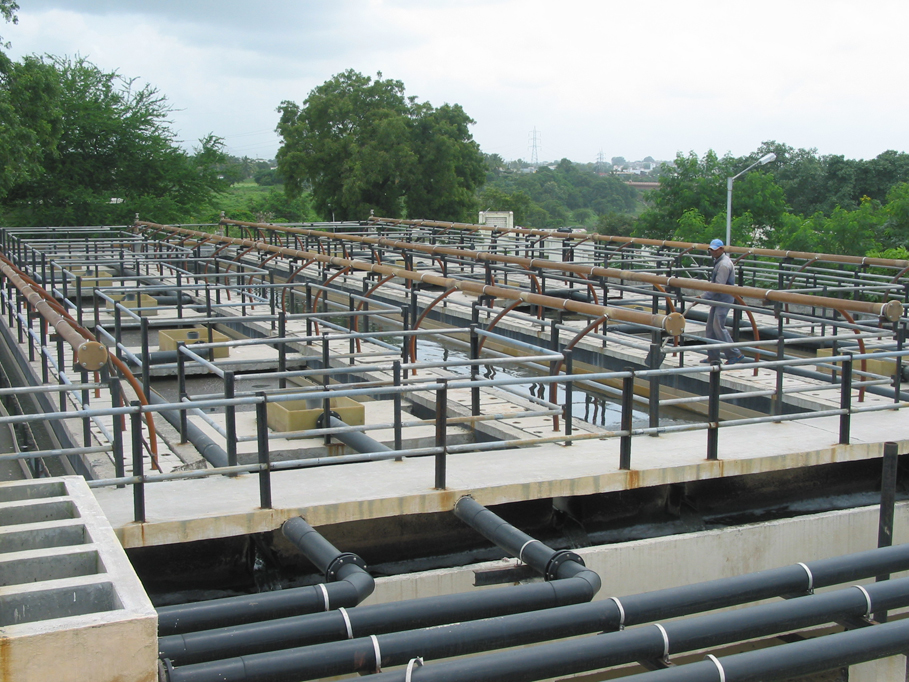 Anaerobic wastewater treatment in hot climatic zones
Anaerobic wastewater treatment in hot climatic zones
In hot climatic zones, anaerobic wastewater treatment constitutes an alternative to the conventional aerobic treatment of municipal wastewater. The process has a low power consumption, generates methane, which can be used to produce energy, and the treated wastewater is suitable for use in agricultural irrigation. An aspect that is disadvantageous to the system’s impact on the climate - especially if low wastewater concentrations and low ambient temperatures are involved - is the fact that a small portion of the greenhouse gas methane remains in the outlet, from whence it can escape into the atmosphere in an uncontrolled fashion.
"AnaKomA 2.0" - Extension of the existing design algorithm based on "AnaKomA"
The current project had based on results derived from the preceding project AnaKomA (Anaerobic municipal wastewater treatment). The main objective of the project was to extend the existing design algorithm derived from the preceding project, and to validated it and applied it to industrial-scale plants. A practicable tool for planning, dimensioning and operating municipal UASB reactors was provided in this fashion. Attention was paid not only to the impact of temperature, the focus being on hot climates, but also to high salt concentrations, and the findings were incorporated into the definition of application limits.
 Measures designed to reduce greenhouse gas emissions
Measures designed to reduce greenhouse gas emissions
In the course of the project, suitable gas recovery measures were developed and tested both on the laboratory and pilot scale, the aim was to minimize the greenhouse gas emissions of the entire process.
Investigation sites:
A semi-industrial test plant was used in Bahrain. Industrial-scale tests were carried out in India and Brazil.
Operating sequences:
The design algorithm was based on the design parameters defined in the above-mentioned AnaKomA project, these have been derived from measurements carried out on a UASB reactor at both laboratory and pilot scale. The characteristic values thus obtained were verified, their range was extended, and their application to industrial-scale plants were validated. The following operating sequences were carried out:
- Operation of UASB reactors at both laboratory and pilot scale, involved investigations into the impact of temperature, salt and substrate concentrations on kinetic parameters, and into the impact of hydraulic loads on reactor-specific characteristic values relating to solids hydrolysis in the sludge bed. Furthermore, options for reducing methane emissions in UASB (upflow anaerobic sludge blanket) reactor outflows were examined, in particular on the basis of vacuum degassing.
- Execution of stationary and dynamic model computations for the purpose of extended the stationary UASB reactor model new developed and for that of constructing a dynamic model based on Anaerobic Digestion Model No. 1 (ADM1). The models were calibrated on three industrial-scale plants by means of detailed measuring campaigns, the results have been recalculated to take various load conditions into account.
- Extension and validation of the existing design algorithm, involved adaptation of the design parameters to the extended range of load and performance characteristic values and ensuring that this extended design approach agrees with the results of the model computations.
Project partners:
Leibniz Universität Hannover, Institut für Siedlungswasserwirtschaft und Abfalltechnik
Welfengarten 1, 30167 Hannover
www.isah.uni-hannover.de
Persons to contact:
Prof. Dr.-Ing. K.-H. Rosenwinkel, rosenwinkel@isah.uni-hannover.de
M.Sc. Klaus Nelting, nelting@isah.uni-hannover.de
STULZ-PLANAQUA GmbH (resigned from the project in 2014)
Beim Signauer Schachen 7, 79865 Grafenhausen / Hemelinger Hafendamm 18, 28309 Bremen
www.planaqua.de
Persons to contact:
Dipl.-Ing. (FH) Ulrich Knörle, ulrich.knoerle@she-group.com
aqua & waste International GmbH
Mengendamm 16, 30177 Hannover
Persons to contact:
Prof. Dr.-Ing. Peter Hartwig, hartwig@aqua-consult.de







